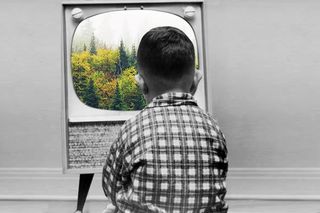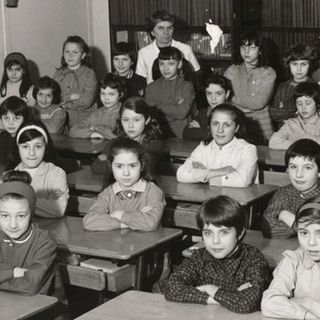
A Screen Time Researcher Answers All Our Questions
Savita Yadav has conducted research with families from across India.

One of the biggest concerns of modern parenting is screen time — or device time, which may soon be a more apt term. So we sat down with Savita Yadav, an assistant professor of computer engineering at Netaji Subhas Institute of Technology in Delhi, to get her perspective. Yadav’s research focuses how babies, kids and parents use screen time, and she’s conducted research with families from across India. Her most recent study explored whether young kids can learn anything from YouTube videos. (Answer: Yes, but not much.) Below, she tells us about that finding, and more. The interview has been edited for length and clarity.
THE SWADDLE: How are Indian parents using screen time with kids?
Savita Yadav: Till age 2, parents do not have any goals or objectives to teach children as such. The basic purpose of handing a phone or any gadget to children is usually that the parent just wants to engage the child while they are busy doing some housework, or other responsibility. So that is the purpose for young-aged kids. As far as preschool kids, schools nowadays are all into smart classrooms. So, the attitude of parents change – like screen time is not only for entertainment, but also can be used for educational purpose.
But they’re not actually [using it that way]. Awareness is not there, the kind of content, you know, and how much of exposure is good or how much is bad. That kind of awareness seems to be lacking as far as Indian families are concerned.
THE SWADDLE: What else is influencing families’ decisions around screen time for kids?
SY: When we were visiting these families one thing was clear, education plays a huge role, education, ethnicity, social status or you can say economic status and the area and nature of work of the parents. These all factors play a huge role in the kind of screen time their children are having. We were observing that specifically with regards to social background. In nuclear families, where there is no joint setup, children were spending more time on smart phones. Educated parents, they want their children to read books, or get into blogging, etc. And apart from that, social status, people from wealthy backgrounds, they showed a tendency of indulging in numerous gadgets [for kids]. We were surprised all these gadgets freely available to their kids at all times. So, it depends, all these factors are very important because it decides ultimately the kind of screen exposure the child is getting.
THE SWADDLE: You mentioned screen time as a distraction earlier. Sometimes parents need to distract kids, though. Is it okay to ever use screen time as a distraction?
SY: This is really a debatable thing as of now I would say. While a parent is using it as a distraction, what is the child using it for? It all depends on that. If he is watching any random cartoon, any random racing car game, any random violent thing or any random video which is not suitable for children, then I would certainly strongly believe that it is doing more harm than good for the child and it better to stop that kind of engagement.
But if the content is properly filtered, is appropriate, is age-appropriate and has been designed to aid the concentration and the cognitive and physical capabilities of children, then once in a while these distractions are okay.
THE SWADDLE: Many parents think of screen time as a black-and-white issue; kids can either have screen time, or just cut it out entirely. Is that the way they should look at it?
SY: No, not at all, no. Time is definitely one factor which is to be taken into account apart from the quality and the content. I would not say that time is important or that time is not important, or that quality is only important and that time is not. Time along with the quality, have to together be taken into account to actually use screen media for the betterment of the children.
It all depends on what exactly the child is viewing. Whether the content of the app or the videos have been tailored specifically to the child’s needs and demands of the curriculum. More research is required to consider the practical side of this issue. We are not dictating that parents have to devote only 1 hour of this or 2 hours as prescribed by AAP. Because schools are also inculcating or integrating media into their curriculum, like the use of the Snap Homework app for communication, and certain [other] apps, to solve problems and communicate.
So, what we’re trying to say is, we have to stick to certain time limits but with that you have to take into account what actually your child is focusing on, that it is good for them. A matter of quality screen time [rather than quantity].
THE SWADDLE: Because schools have started incorporating tech into classrooms, it makes it seem like using devices is a really important skill. Can a kid fall behind if they don’t get screen time when they are young?
SY: No, I don’t personally think so, since day by day, technology is more user-friendly, more child-friendly. More and more apps are coming up which take this into consideration. And kids they’re getting smarter day by day, so whenever they get a chance, they will be fast learners, and won’t be lagging behind.
However, a child might face some mental pressure because his peers or friends have screen time. ‘I’m not aware of this because my friend uses it but I’m not,’ the kind of left out feeling a child gets momentarily. That may be a concern, but I don’t think the child will be left behind in the future.
THE SWADDLE: What has your research taught you about what kids can get from screen time at different ages?
SY: Specifically talking about my YouTube videos research, we were focusing mainly on young children from 6 to 24 months of age. We observed that at 6 months of age, children were attracted to music, nothing much as such; at 12 months of age, they watched videos and they identified their parents and people they’d met in person. And at 18 months of age they were able to touch buttons on the smartphone, but they didn’t know what they were doing exactly. And by 2 years of age they were entertained basically, but didn’t learn as such.
However, I would like to add this: while the child may not learn as such from the video, if words in the video are regularly used by the parents in their day to day life, everyday, then child may learn such words; [otherwise], he or she may forget soon after. The usage has to continue for the child to retain that sort of learning.
Older kids, 2 to 4 years of age, were able to scribble and draw using a smartphone app. At this age kids are into coloring and drawing, which is why it’s very important for them. Lowenfeld, a renowned name in our field, conducted research showing how children of different age brackets, have different drawing techniques. Our study found that even on the drawing app the [traditional developmental progression of kids’ drawing skills] still held true. So drawing app can be used along with the traditional media by the children to continue drawing activity.
THE SWADDLE: What do your findings mean for parents the next time they give their kids a device?
SY: I would suggest that first of all they should not fall into traps of all these apps, whether they are freely or commercially available, that claim to help your child master various things. First of all, the parent has to decide, when and where screen media will be engaged. How much time is important, and after that, depending on the age of the child, the parent has to decide on what kind of app is important, you know, what kind of app the parent would like the child to continue with.
I would recommend really those apps where the parent and the child could together engage in a particular activity, in the app itself. So in that way the parent can actually keep track of what their child is doing, and the child feels more engaged with the parent and the technology together.
THE SWADDLE: Does it make that big of a difference, if a parent is involved in the screen time, too?
SY: Yes, yes. Rather than giving independent screen time for the children I would recommend parents give screen time that is together time and use it as a tool to grow with your child.
Related:
Angelina Shah is a staff writer with The Swaddle. In her previous life she was a copywriter in advertising. She has a penchant for reading, singing, travelling and being obsessed with superheroes.
Related


The Difference Between Boys and Girls in the Classroom
